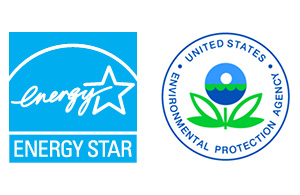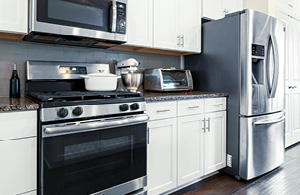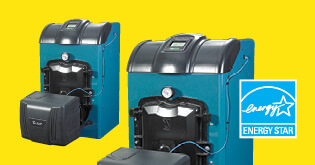- My Account:
- Sign In
- Register
- Make Payment
Articles.
Below are the categories for any articles that are published on our website. You can find articles on topics ranging from heating oil, propane, heating equipment, cooling, and much, much more. Our Home section also contains important tips, insightful facts and helpful how-to guides on lots of topics about everything from energy efficiency to important safety tips for taking care of your home and family. We also update our Featured Articles section with our newest and most relevant seasonal content to help you with your home services throughout the year. Check them out below...
Featured articles.
Ultimate guide to household Energy Star ratings.

As energy efficiency becomes a priority for homeowners, understanding Energy Star® ratings is crucial for making smart choices about home systems and appliances. Petro Home Services is your expert resource for all things related to residential HVAC best practices and energy efficiency.
What is Energy Star?
Energy Star is a program established by the U.S. Environmental Protection Agency (EPA) to help consumers identify energy-efficient products and practices. Launched in 1992, Energy Star has become a trusted symbol for energy efficiency, guiding homeowners towards products that save energy, reduce costs, and protect the environment. The program encompasses a wide range of products, including appliances, electronics, HVAC systems, and lighting, ensuring consumers can access high-performance energy-saving options.
Importance of energy efficiency.
Smart homeowners prioritize energy efficiency to reduce utility bills, minimize environmental impact, and enhance the performance of their home systems, such as HVAC, heating or air conditioning systems and kitchen appliances. Energy efficiency is essential for reducing energy consumption, which in turn lowers greenhouse gas emissions and conserves natural resources. Energy Star plays a significant role by certifying products that meet strict energy efficiency guidelines, ensuring that consumers can make choices that benefit both their wallets and the planet.
Understanding Energy Star ratings.
Energy Star certification covers various areas, each with specific criteria that products or buildings must meet to earn the label.
Criteria for appliances.

For appliances to receive Energy Star certification, they must meet stringent energy efficiency criteria set by the EPA. This includes demonstrating significant energy savings over standard models and incorporating innovative technologies that reduce energy consumption without sacrificing performance. For example, Energy Star-certified refrigerators use advanced compressors, improved insulation, and more precise temperature control mechanisms to reduce energy usage while maintaining optimal food storage conditions.
Criteria for buildings and facilities.
Buildings and facilities can earn Energy Star certification by achieving a score of 75 or higher on the EPA’s energy performance scale. This score reflects the building's energy efficiency compared to similar structures nationwide. Factors considered include energy use, operational characteristics, and indoor environmental quality. Certified buildings typically use advanced energy management systems, efficient lighting, and HVAC systems designed to minimize energy consumption.
Criteria for new homes.
New homes can earn Energy Star certification by meeting specific requirements that focus on energy-efficient construction practices and materials. These homes must be inspected and verified by a third party to ensure they achieve energy savings of at least 15% more than homes built to the 2009 International Energy Conservation Code (IECC). Energy Star-certified homes often feature enhanced insulation, high-performance windows, and energy-efficient heating and cooling systems contributing to lower utility bills and increased comfort.
Benefits of Energy Star.
Energy Star offers numerous benefits, including:
- Environmental impact: Reduces greenhouse gas emissions and helps combat climate change by promoting energy-efficient products and practices. By using Energy Star-certified products, homeowners contribute to a reduction in the demand for fossil fuels, leading to a decrease in air pollution and a healthier environment.
- Financial savings: Energy efficient systems lower utility bills through reduced energy consumption, offering significant cost savings over the product's lifetime. For instance, Energy Star-certified appliances can save homeowners hundreds of dollars in energy costs annually, making them a wise long-term investment.
- Enhanced performance: Ensures that certified products deliver superior performance and reliability compared to non-certified alternatives. Energy Star products are often subjected to rigorous testing to ensure they meet high standards for quality and durability, providing peace of mind to consumers.
How to identify Energy Star products.

Homeowners can easily identify and select Energy Star products through the following:
- Energy Star label: Look for the label on product packaging, which indicates the product meets the energy efficiency criteria. The label is a clear and recognizable symbol that assures consumers of the product's energy-saving capabilities.
- Product listings and database: Visit the Energy Star website to access a comprehensive database of certified products, making it easy to find energy-efficient options. The database includes detailed information about each product, including its energy performance metrics and user reviews.
Common Energy Star certified products.
Energy Star certification covers a wide range of products, including:
- HVAC systems: Heating, ventilation, water heater and air conditioning systems designed to maximize energy efficiency and improve indoor comfort. For example, certified HVAC systems often feature advanced compressors, variable-speed fans, and smart thermostats that optimize energy use based on the homeowner's schedule and preferences.
- Appliances: These include refrigerators, dishwashers, and washing machines that use less energy and water than standard models. For instance, Energy Star-certified refrigerators use advanced technologies to keep food fresh while consuming up to 15% less energy than non-certified models.
- Electronics: Televisions, computers, and monitors that reduce energy consumption without compromising functionality. Energy Star-certified televisions, for example, use less power in both active and standby modes, helping to lower electricity bills.
- Lighting: LED bulbs and fixtures that use significantly less energy than traditional lighting solutions. Energy Star-certified LED bulbs can last up to 25 times longer and use at least 75% less energy than incandescent lighting, resulting in substantial energy savings and reduced maintenance costs.
How switching to a new Energy Star certified HVAC system helps you save on energy costs.
Future of Energy Star and innovations in energy efficiency.

As technology advances, Energy Star continues to evolve, incorporating new innovations to further enhance energy efficiency. Future developments include smarter home systems, advanced building materials, and more stringent certification criteria, ensuring that Energy Star remains at the forefront of promoting energy-efficient practices for homeowners. Innovations such as smart home integration and real-time energy monitoring are expected to play a significant role in the next generation of Energy Star products, making it easier for homeowners to manage and reduce their energy consumption effectively.
By understanding and utilizing Energy Star ratings, homeowners can make informed choices that benefit both their homes and the environment. Trust your local HVAC pros at Petro Home Services for expert advice and solutions for your home systems including heating, AC, generators and more.
For information on how to upgrade your home’s heating system or AC system to a more energy efficient one, check out our offers and contact Petro today: Sales 888.735.5651 Service 800.645.4328.
Source: Energy Star






